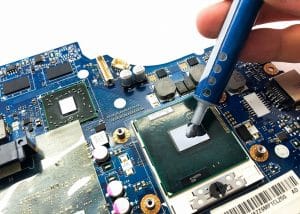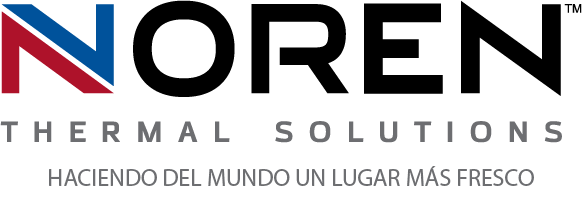 The more technology has advanced over the years, the more companies that utilize it expect their technological solutions to accomplish. This helps drive further innovation in various forms of technology, but can also make common technological challenges even more difficult to overcome. One of those challenges is keeping thermal management solutions efficient and eco-friendly, which has traditionally been more than just difficult. Traditional solutions, such as air conditioners and air compressors, are not designed to operate in a highly efficient or eco-friendly manner. However, more modern thermal management solutions are made specifically to enhance the efficiency of the technologies they cool, and to do so using highly eco-friendly heat transfer methods.
The more technology has advanced over the years, the more companies that utilize it expect their technological solutions to accomplish. This helps drive further innovation in various forms of technology, but can also make common technological challenges even more difficult to overcome. One of those challenges is keeping thermal management solutions efficient and eco-friendly, which has traditionally been more than just difficult. Traditional solutions, such as air conditioners and air compressors, are not designed to operate in a highly efficient or eco-friendly manner. However, more modern thermal management solutions are made specifically to enhance the efficiency of the technologies they cool, and to do so using highly eco-friendly heat transfer methods.
The intricate nature of modern thermal management
The reason older thermal management solutions aren’t typically known for being eco-friendly is because of the cooling methods they utilize. For instance, air conditioners use HVAC methods of creating chilled air using Freon and complicated machinery. The air conditioning unit then uses different machinery to circulate the chilled air it creates throughout the interior of an electrical enclosure. Both generating chilled air and circulating it continuously typically require large amounts of energy to facilitate. However, modern cooling solutions like heat exchangers don’t require chilled air or its circulation to effectively cool enclosures. On the contrary, they make use of an eco-friendly cooling fluid and take advantage of its latent heat of vaporization to efficiently and rapidly transfer electrical waste heat.
The eco-friendliness of modern cooling solutions
When heat exchangers first became a popular alternative to more traditional thermal management solutions, many of their most valued benefits included their ability to reduce energy consumption and costs related to electrical cooling processes. These benefits largely stem from the more innovative heat transfer techniques they utilize, which also create several other important advantages for most companies. For instance, the process of transferring heat with an eco-friendly cooling fluid doesn’t require as much energy as generating and circulating chilled air. In addition to lowering overall costs, this also makes heat exchangers much friendlier to the environment, and an important advantage in lowering companies’ environmental footprints.
Why cooling should be part of the initial design
For many companies that began utilizing heat exchangers early, the benefits they provide have proven significant. However, those advantages are even more pronounced for applications that are designed to use heat exchangers as their cooling solutions from the start. While modern heat exchangers can often effectively meet the parameters of most applications, those that are designed specifically to meet a given application’s unique thermal management needs can make electrical cooling even more efficient and eco-friendly.
For more information about designing thermal management solutions to be more eco-friendly, call Noren Thermal Solutions in Taylor, TX, at 866-936-6736.







